
views
Understanding the Basics

Understand why a balloon rises. Hot air balloons are based on a simple concept. As you heat air, or any other gas, it becomes less dense. Just like a bubble rising in an aquarium, the hot air will float above the denser, colder air around it. Get the air in the balloon hot enough, and it can lift the balloon canvas, the basket, and everyone inside it as well. Air gets progressively thinner (less dense) as you travel upward, because there is less pressure from the weight of the air above it. Because of this, a hot air balloon only rises until it reaches the point where the density of the balloon plus the air inside it is equal to the density of the air around it.
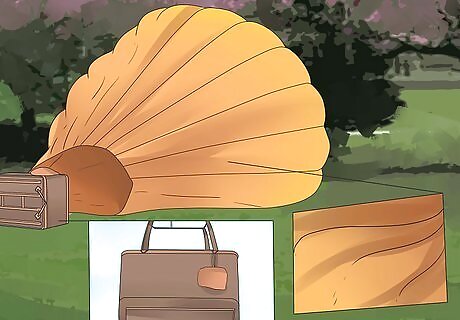
Know the basic structure. The structure is so simple that you may already understand it, but learn the terminology so you and your crew can communicate to each other: The fabric balloon itself is called an envelope, made from sewn panels called gores. In most balloons, there's a hole at the top of the envelope, tightly covered by a flap of fabric. This is called a parachute valve. It is attached to a rip line that runs all the way down to the basket. The bottom end of the envelope, or mouth, is located above a burner, which produces flame fueled by the propane tanks underneath. The propane tanks, passengers, and cargo all stand in a basket attached beneath the envelope.

Wear protective clothing. The pilot should wear safety goggles, since they will be close to the flame. Pilot and crew should wear heavy-duty gloves, long sleeves, and long pants, and avoid nylon, polyester, or other materials that melt when exposed to flame. Everyone in the basket should keep in mind that the balloon may land in mud or rough terrain, and wear comfortable clothes and shoes.

Let out more propane to rise. All it takes to add propane to the fire is opening a simple blast valve on the line attached to the propane tanks, typically located just beneath the burner. The wider you hold the valve open, the more heat rushes into the balloon, and the faster it rises. Dropping ballast, or any heavy object, over the side of the balloon will reduce the overall density of the balloon, and cause you to rise. For obvious reasons, this method is not recommended above populated areas.
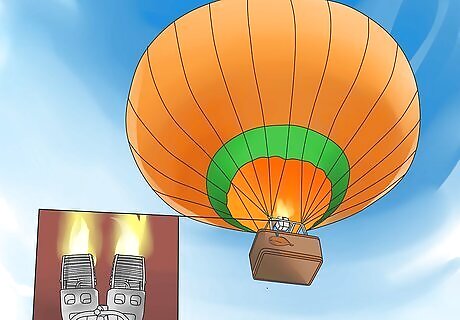
Learn how to stay at a stable height. Like any object hotter than the surrounding environment, the hot air balloon cools down over time, which causes it to sink gradually. In order to stay at the same height, you'll need to use one or both of these techniques: The propane tank themselves have a metering valve or "cruise" that controls how much propane feeds the burner. Gradually opening this as you fly is an easy way to stay at roughly the same altitude. A short burst of additional propane from the blast valve will lift the balloon up when you notice it dipping too low.
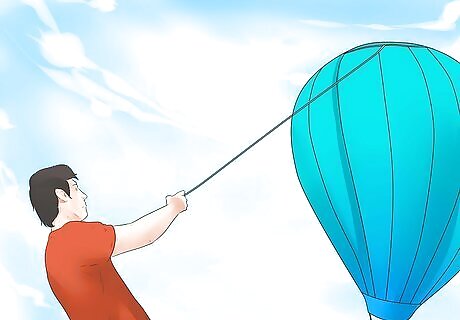
Open the parachute valve to lower the balloon. Remember, the parachute valve is the flap of fabric on the top of the balloon envelope. This flap automatically seals itself when left alone, but you can pull a red cord called a rip line to lift the flap. This lets hot air escape from the top. Keep the cord pulled until the balloon is lowering at the desired rate, then let go to close the flap again. The parachute valve is also called a deflation port, and the rip line a deflation port line.
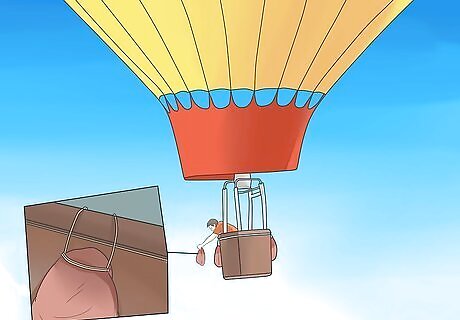
Raise or lower to control direction. Balloons have no direct way to control the direction they travel. However, there are typically several layers of wind stacked on top of each other, blowing in different directions. Raise or lower the balloon to catch a different cross-stream, and your balloon will change direction. Pilots often need to improvise the route as they go along, to some extent, and it takes experience and planning to catch the right wind at the right time. Many balloons have cords that pull open side vents or flaps on the side of the envelope, but these just rotate the basket. Almost all hot air balloon flights are shadowed by a car or truck on the ground, picking up the balloon and its passengers once it lands.
Piloting a Balloon
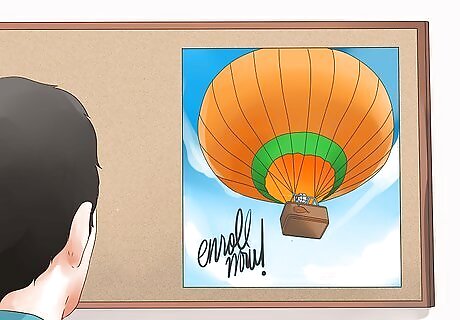
Take a training course before you fly as the main pilot. The instructions below can help you understand the duties and skills required of a balloon pilot, but they cannot substitute for real experience. A full balloon pilot's license and training can cost thousands of dollars, but you can start by volunteering to be part of a ground crew. Once you have on-the-ground training, you'll only need about 10 to 15 hours of total flight training to pass the certification test, although this varies by country.

Check wind conditions. Knowing when to cancel a flight is extremely important. Flying in strong winds is dangerous and should not be attempted. Beginners should stick to the first few hours after sunrise and the first few hours before sunset, when wind is usually predictable and low-speed.
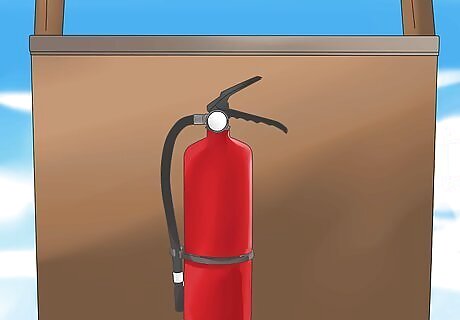
Check for vital equipment. At the least, the basket should contain a fire extinguisher, a first aid kit, a topographic map, an aviation map, an altimeter, and a log book to record the details of your flight. Check the propane tank's fuel gauge so you can be sure there's enough fuel for the flight — typically about 30 gallons (114 liters) per hour. For longer flights, you'll also need radio equipment, and possibly electronic navigation equipment as well.
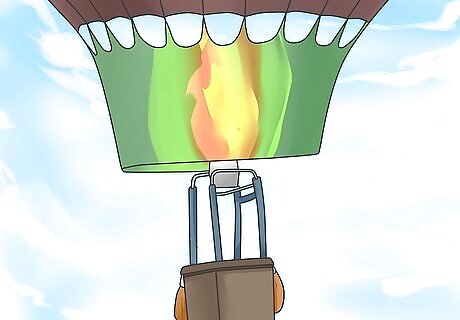
Inflate the balloon for lift off. Almost all balloons require several people to get off the ground. First, the burner is attached to the basket frame, and laid down sideways with the envelope attached and unfolded along the ground. The envelope mouth is lifted open and inflated using a powerful fan for about ten minutes, then heated using the burner. The basket is typically held down by crew members, and/or tied to the ground car until the balloon is ready for lift-off. The basket is righted, the passengers and pilot get in, and the pilot releases a steady flame from the burner to lift off the ground.

Stay alert during liftoff. As the pilot, you should stay alert and watch the inflating envelope and the ground crew's hold on the lines until everything is steady and proceeding as planned. Briefly but methodically check in all directions for all trees or other obstacles the balloon might hit on its way up. Once you feel the first breeze as lift-off begins, immediately fix your eyes at the obstacle closest to your flight path, and do not look away until the balloon is safely above it. This makes it easier to notice a deviation in direction, and to react to it by rising faster.

Know your weather phenomena. Prospective balloon pilots must pass a meteorology test to gain certification, including a basic understanding of how temperature, altitude, and humidity interact, and what different types of clouds can tell you about air conditions. While these aren't all covered in this guide, here are a couple examples of common phenomena: A significant change in wind direction as you rise or fall is called wind shear, and requires special focus as it can speed up or slow down your motion. If strong wind shear blows out your burner's pilot light, relight it and heat the balloon as soon as possible to avoid crashing. If the balloon is responding more slowly to your actions, or you notice air pollution trapped instead of rising, you may be in an "inversion," where the surrounding air is hotter the higher you go. Compensate by increasing the amount of heat added or let off when you want to change altitude.

Check for wind direction and speed. Learn how to read a weather map, and use them to plan around the general wind speed and direction in different areas. To test for local wind conditions below you, spit or squirt shaving cream over the edge of the basket.
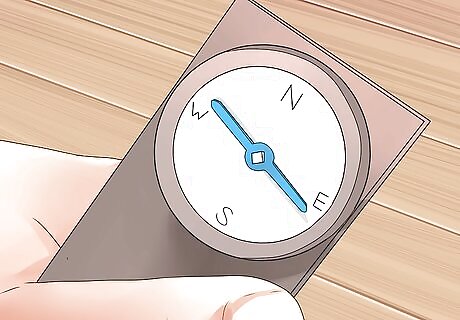
Know how to navigate. Balloon pilots are trained to use a topographic map and altimeter to plot their course and altitude throughout the flight. Obtain an aviation map from your regional aviation administration, and use it to stay out of the path of aircraft. A GPS unit, magnetic compass, and pair of binoculars are also useful, but not always necessary for short flights, unless required by law in your area.

Avoid turbulence or thermals. If you experience any turbulence, or if charts, clouds, or other weather phenomena lead you to expect it, land as soon as you can. Similarly, if you feel any circular motion or unexpected ascent, land immediately before the rising "thermal" of warm air sends the balloon out of control. Vent air rapidly once you land out of a thermal, or it could tug the basket along the ground.

Be prepared for emergencies. Practice relighting the pilot light so you can do so rapidly in mid-flight during an emergency. If the pilot light does not relight, there may be a fuel clog. This requires relighting the propane above the blast valve, which should be taught under experienced supervision. In the worst case scenario, when the envelope fabric is torn, burn as much propane as possible to minimize the speed of your descent.

Land the balloon. It can take a surprising amount of practice to develop the ability to tell the precise direction of travel in mid-flight, let alone select a landing site and successfully guide the balloon to that destination. There are several approaches and techniques you'll need to learn to land in various conditions, and an experienced teacher is vital. Begin by practicing in best conditions, with a large landing space that you can glide across at a gentle downward slope. Vent the air slowly and keep your eye on the tallest nearby obstacle, even if it's slightly to the side. Once you've cleared the obstacle, you can vent as needed, but aim for a steady, controlled glide. As you touch ground — and prepare for a bumpy ride, vent the rest of the air off to deflate the envelope. Congratulations! You now know the basics of flying a balloon.



















Comments
0 comment